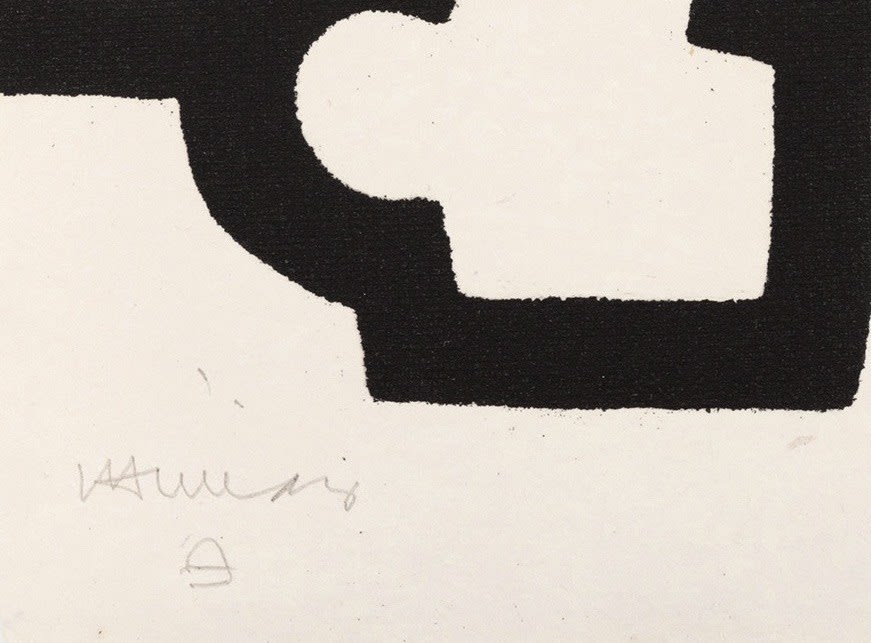-
Eduardo Chillida
Omar Khayyam Txiki, 1982Softground etching on Segundo Santos paper8 x 4 5/8 in (20.3 x 11.7 cm)Edition of 50, plus 9 AP© 2025 Artists Rights Society (ARS), New York / VEGAP, Madrid. Courtesy of Zeit Contemporary Art, New York$ 15,000.00Further images
'Omar Khayyam Txiki' emerges in Eduardo Chillida's oeuvre as a delicate yet profound articulation of space, a microcosm where the monumental ideas of form and emptiness are whispered rather than...'Omar Khayyam Txiki' emerges in Eduardo Chillida's oeuvre as a delicate yet profound articulation of space, a microcosm where the monumental ideas of form and emptiness are whispered rather than declared. Completed in 1982, this small-sized etching is a testament to Chillida's deep investment in the poetics of the small, wherein the artist compresses vast conceptual landscapes into the intimate boundaries of paper. The piece is an ode to the minutiae of existence and a homage to the delicate balance between the solid and the ethereal. Chillida, often recognized for his monumental sculptures, embraces here restraint and a minimum set of means, expressing his monumental thoughts through a visual language that requires a leaning in, a closer contemplation, much like reading a line of poetry in solitude.'Omar Khayyam Txiki' is an intimate tribute to Omar Khayyam—the great Persian polymath whose philosophical and astronomical explorations vastly contributed to our understanding of the universe's expanse. Chillida’s etching is a visual symphony played in the key of contemplation and cosmic inquiry, its forms and voids are a reflection of Khayyam's profound meditations on existence. In the interplay of black and white, presence and absence, one can discern a dialogue echoing the essence of Khayyam's rubaiyat, where the graspable reality of life is juxtaposed against the infinite and the unknown. The artwork embodies the search for harmony within the immensity of the cosmos, a theme resonant in both Khayyam's celestial studies and Chillida's sculptural poetics, suggesting that within the finite bounds of earthly comprehension, one can touch upon the infinite.
The artwork itself, executed on hand-made paper from the renowned Spanish craftsman Segundo Santos, speaks to the fundamental nature of creation—where the hand of the artist and the artisan converge, blurring the lines between art and craft. The textured paper, with its organic edges, seems to capture the very essence of the celestial firmament, as if the sky has been brought down to the touch of human hands, just as Khayyam brought the stars closer to the human mind. Each line and curve on this paper, a celestial map drawn in negative, speaks of the voids between stars, of the dark matter that binds the universe, and of the silent music of the spheres. In 'Omar Khayyam Txiki,' Chillida presents not just an artwork but a fragment of the cosmos, an astral poem wrought in the finite yet limitless language of form and space, positive and negative, black and white.
NOTES
This artwork is signed and numbered in pencil.
Published by Galerie Maeght, Zürich, and printed at Taller Hatz, San Sebastián.Provenance
Galerie Maeght, Zürich
Private collection, United States
Literature
Eduardo Chillida. Obra gráfica completa, 1977-1985, Bilbao, Museo de Bellas Artes de Bilbao, 1986, p. 89 (illustrated).
Martin Van Der Koelen. Eduardo Chillida: Opus P.II: Catalogue Raisonné of the Original Prints, 1973-1985. Munich, 1997, cat. no. 82007, p. 298-299 (illustrated in color).






